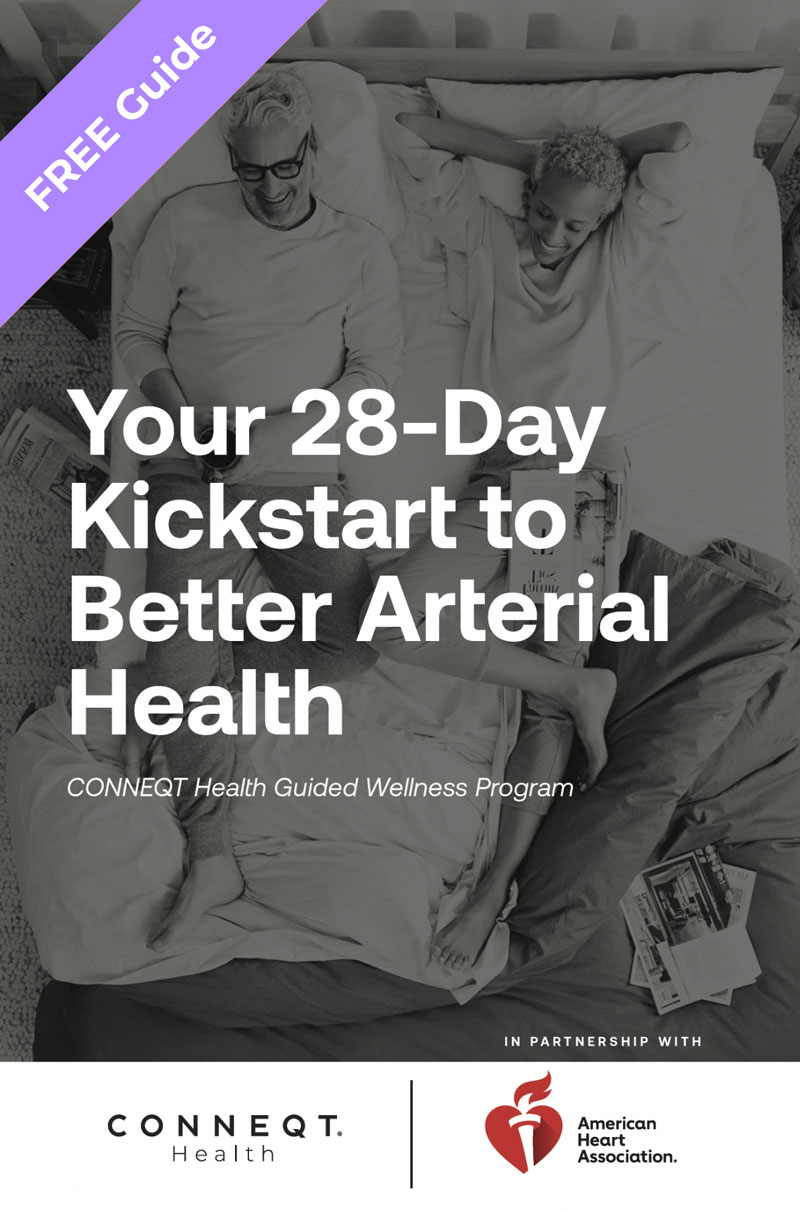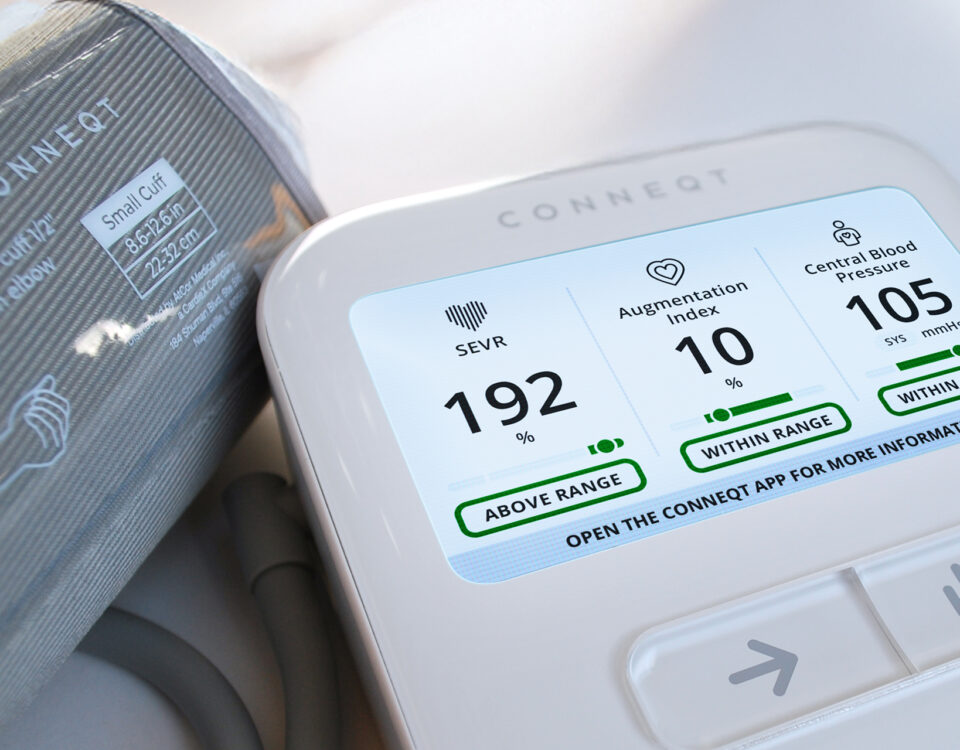For many men, stress feels like background noise, just part of the routine. But over time, it starts showing up in more noticeable ways: disrupted sleep, rising blood pressure, or that uneasy sense that your body is running on overdrive.
It’s not just in your head. Stress puts pressure on your cardiovascular system—literally. With each response, your heart and arteries work harder. The wear might be silent at first, but it adds up fast.
Once you understand what’s happening inside your body, you can start to turn the tide.
Stress Isn’t Just in Your Head, It’s in Your Arteries
While stress is often treated as a mental health concern, it creates real, measurable strain on your cardiovascular system.
Every time you’re under pressure, your body activates its “fight or flight” response. Your heart rate climbs, your blood vessels tighten, and central blood pressure, the pressure closest to your heart, rises. These reactions help you power through a tough moment, but when they happen repeatedly, they begin to take a toll.
Over time, stress contributes to arterial stiffness—when arteries lose flexibility and create more resistance for the heart. As that stiffness increases, so does your risk for hypertension, atherosclerosis, and stroke.
Even short bursts of stress can shift your cardiovascular function. In one study, participants solving math problems under pressure showed measurable increases in central arterial stiffness, after just a few minutes. If those stress spikes happen daily, the effect builds quickly.
But you don’t have to wait for a crisis to protect your cardiovascular health. Start by asking two simple questions: Am I okay? And, what can I do about it today?
With the right habits, you can reduce stress in real time and begin to reverse the damage it leaves behind. It’s a two-sided strategy: treat what’s breaking you down, while reinforcing what builds you up.
What Stress Really Does to Your Cardiovascular System
Most people know that stress can raise blood pressure. But that’s just the beginning.
When your body enters “fight or flight” mode, it triggers a chain reaction that impacts more than your mood. Your heart rate climbs, your arteries constrict, and central blood pressure rises. These shifts happen quickly, often without symptoms. Over time, however, they begin to wear down your cardiovascular system.
Here’s what that looks like:
- Central blood pressure (CBP) rises, increasing the force your heart, brain, and kidneys must withstand—especially during moments of stress when your system is already under pressure.
- Arterial stiffness increases, making it harder for blood to flow efficiently. This adds workload to your heart and raises the risk of long-term damage—measured by metrics like augmentation pressure (AP) and augmentation index (AIx).
- SEVR (subendocardial viability ratio) drops, indicating your heart muscle may not be getting enough oxygen during times of high demand—especially problematic when stress is frequent or prolonged.
This is part of why chronic stress is such a well-established risk factor. These changes don’t always feel dramatic in the moment, but they add up, and the strain they place on your heart and arteries can quietly increase your long-term risk for cardiovascular disease.
The good news: these patterns are reversible. Stress-related changes in blood pressure and arterial stiffness don’t have to be permanent. With the right habits, it’s possible to reduce cardiovascular strain and restore healthier function over time.
Five Practical Stress-Management Strategies That Support Arterial Health
You don’t need to overhaul your life to improve your cardiovascular resilience. In fact, some of the most effective stress-management techniques are also the simplest.
The strategies below help calm your nervous system, reduce arterial strain, and support better oxygen delivery to the heart—three things that matter whether you’re managing daily stress or looking ahead to long-term health. Each one is backed by research, and together, they offer a well-rounded approach to restoring balance.
1. Mindfulness Meditation
Meditation may not be the first tool most men reach for, but it’s one of the fastest ways to shift out of stress mode.
In one study, a single hour of mindfulness meditation significantly reduced the heart’s pressure load, easing the strain on the cardiovascular system. Even a brief session has been shown to reduce the pressure waves that reflect off stiff arteries, meaning your heart doesn’t have to work as hard with every beat.
Try starting with five minutes of focused breathing. The goal isn’t to clear your mind, it’s to give your system a break.
2. Deep Breathing (The 4-4-8 Method)
Slow, controlled breathing can help reset your nervous system and lower cardiovascular strain.
In a clinical study, 30 minutes of deep breathing reduced systolic blood pressure by nearly 6 mmHg and improved arterial stiffness. That’s a meaningful shift for something you can do at your desk.
The 4-4-8 method is simple: inhale for four seconds, hold for four, exhale for eight. Do this for a few minutes to activate your body’s relaxation response.
3. Nature Walks
You don’t have to exercise hard to benefit. Even a walk outdoors can calm your nervous system and ease vascular strain.
Time in nature has been linked to lower blood pressure and reduced sympathetic nervous system activity, both of which support healthier arteries. Gentle movement also helps improve oxygen delivery to the heart, especially during times of stress.
Aim for 20 to 30 minutes outside. A local trail or park is all you need.
4. Daily Downtime Without Screens
Digital input keeps your brain stimulated and your stress response switched on. In one study, young adults who spent more than six and a half hours a day on screens were significantly more likely to have elevated blood pressure.
Even short breaks can make a difference. Setting aside 15 to 30 minutes a day without screens—whether you’re stretching, journaling, or just sitting quietly—helps your body reset and supports blood pressure regulation. It’s not about doing nothing, it’s about creating space for recovery.
5. Gentle Yoga or Stretching
You don’t need to be flexible to see results. A few minutes of light stretching can lower muscle tension and support better blood flow.
Yoga-based movement has been shown to improve systolic and diastolic blood pressure and reduce arterial stiffness, especially in men over 40. The combination of movement and breath helps your body transition out of stress mode more efficiently.
Try 10 minutes at the beginning or end of your day. Think of it as active recovery for your cardiovascular system.
Relaxation Isn’t Lazy, It’s a Strategy for Long-Term Health
Stress is a normal part of life. But over time, it can quietly reshape your cardiovascular health, raising central blood pressure, increasing arterial stiffness, and reducing the oxygen your heart receives when it needs it most.
These changes are easy to miss, especially when they build gradually. But they’re measurable, and most importantly, they’re reversible.
The five habits outlined here aren’t extreme or time-consuming. They’re simple, research-backed strategies that help your body recover from stress and reduce the load on your arteries. Over time, they support better vascular function—lower central pressure, improved SEVR, and more flexible arteries.
This is how you work on both ends of longevity: treat the forces that chip away at your health while reinforcing the ones that protect it. Stress management isn’t just about feeling better, it’s about building cardiovascular resilience that lasts. And it doesn’t mean sacrificing the present for some distant payoff. The right habits protect your arteries while helping you feel better now.
And with the CONNEQT Arterial Health Assessment, you can track those changes. Whether it’s a lower augmentation index, steadier readings, or improvements across your cardiology reports, the data gives you insight into what’s working, and where to focus next.
Start with one habit. Make it part of your day. Then build from there.
Your arteries will notice. So will your future self.







